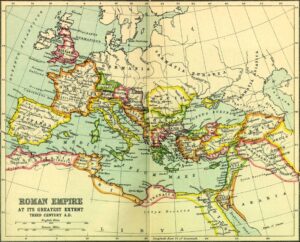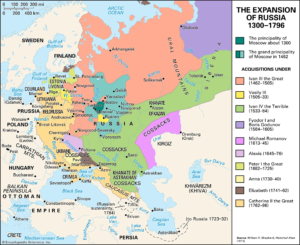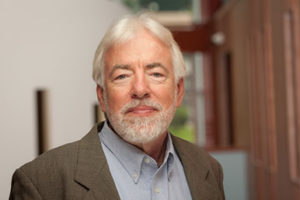
James K. Boyce – Photo by Matthew Cavanaugh
04-19-2024. Economist James K. Boyce analyzes new data on US disparities and frames environmental degradation as a class issue.
U.S. billionaires have seen their wealth nearly double since the Trump tax cuts took effect in 2017. In the meantime, the planet is getting hotter and the richest 1 percent of humanity accounts for more carbon emissions than the poorest 66 percent. Indeed, the interconnection between climate change and economic inequality has emerged as a central theme in serious economic analyses and a focal point of climate activism.
In the exclusive interview for Truthout that follows, progressive political economist James K. Boyce — who has just received the inaugural Global Inequality Research Award from Sciences Po and the World Inequality Lab for his groundbreaking work in the field of economic and environmental inequalities – explains the main causes behind the broad trend of rising inequality in the U.S. and globally, and how it is linked to environmental degradation.
However, as Boyce makes clear, environmental degradation does not impact everyone equally. Environmental degradation is a class issue as it disproportionately affects the poor, and it is the rich that benefit from environmentally harmful activities. Nonetheless, in spite of the challenges facing us in addressing climate change and inequality, there are economic instruments available to us that, if implemented, will create more equal societies and secure at the same time a sustainable future. This is especially critical as fossil fuel industry bosses are pulling out all stops to convince the world that it should “abandon the fantasy” of transitioning away from dirty energy.
Boyce is professor emeritus of economics and a senior fellow at the Political Economy Research Institute at the University of Massachusetts Amherst. He is the author, among many other works, of Economics for People and the Planet: Inequality in the Era of Climate Change.
C.J. Polychroniou: I’d like to start by asking you to comment on the latest report by the nonprofit Americans for Tax Fairness showing that the combined wealth of U.S. billionaires has nearly doubled since 2017, hitting a record of $5.8 trillion. In light of this report, why does a wealth tax make sense in the effort to reduce inequality?
James K. Boyce: The first thing to say is that nobody “earns” a billion dollars. It’s simply not possible to make that much money by working for it, no matter how hard you work or how smart you are. So we have to ask, where does this enormous wealth come from?
In 2023 there were 735 billionaires in the U.S. (“a mere 735,” as Forbes put it). If their wealth rose by $2.9 trillion in the past six years, that means they each pocketed on average $39 billion — more than $6.5 billion apiece per year.
To which one might respond: WTF??! How did they do this?
There are three ways a person can accumulate enormous wealth. Winning the lottery is not one of them — the lottery is peanuts compared to the sums we’re talking about here. One way is by outright plunder: taking money and resources from other people, either by naked expropriation (like seizing control of lands and minerals) or monopolization (hence the U.S. term “robber barons”) or grand corruption. The second is by inheritance. If kids could choose their parents, we might say, ‘Well done, junior, you deserve to be rich because you made such a smart choice.’ But kids don’t choose their parents: the inheritors of great fortunes do nothing to deserve them. The third way is through the income spun off by wealth itself — profits, dividends, interest, rents, capital gains — what economists call “returns to capital” as opposed to returns to labor. The real problem is not that wealth grows over time. It’s that so few people have so much of it, while so many people have so little.
The toxic concentration of wealth in the U.S. and many other countries is not only an economic problem. It is a political problem, too. Disproportionate wealth translates into disproportionate political power, and this corrodes democracy. As inequality widens, the ultra-rich become more able and willing to elevate their own self-interest above the public interest. One obvious way they do so is by cutting their own taxes while increasing taxes (and cutting benefits) for everyone else.
Wealth taxes could be a powerful tool to address rampant inequality. The idea here is to tax not just income (the annual flows of money a person receives) but also accumulated wealth held as financial assets, real estate, and so on, above the threshold level that demarcates the ultra-rich. In practice, only a handful of countries have wealth taxes, and the U.S. is not one of them. Moreover, where wealth taxes do exist, their rates are typically modest — less than 2 percent, less than the average return to capital. This slows the rise of inequality but does not arrest it. Considerably higher rates would be needed to have a significant impact.
In addition to the wealth tax, there are other policies to combat toxic inequality. We need well-designed and well-enforced laws against plunder, including plunder in its latest guise: corporate smash-and-grab operations once called leveraged buyouts, that now go by the more innocuous-sounding name of “private equity.” We need laws against organized criminality that masquerades as legitimate business. We also need hefty inheritance taxes on outsized estates of more than, say, $10 million. And we need to remedy the perverse situation today in which billionaires pay lower rates of income tax than people who work for a living (Exhibit A is our tax-dodger-in-chief). Among other things, it is bizarre that unearned capital gains are taxed at a lower rate than hard-earned income.
Economic inequality has been shown to be extremely toxic to individuals and society. In the U.S. the top 1 percent own more wealth than the entire middle class. What are the main causes of inequality in today’s world, and why does the U.S. have such a high level of inequality?
The snowball effect is a big part of the problem. In the upper tier of the economic spectrum, wealth generates income, and income in turn generates more wealth. The rich make money even when they sleep. Their economic advantages are compounded by their political influence over the government. At the opposite end of the economic spectrum, the poor make money only when they work. Even then, they often don’t make much. Unless some kind of countervailing force is present, inequality tends to widen over time — an accumulation of advantages and disadvantages.
If the economy were a self-contained perpetual-motion machine, economics would be a dismal science indeed. But it is not. Every economy operates within the broader sphere of society and politics, making it possible not only to hold inequality in check but also to reverse it. Examples of countervailing forces include public education and trade union organization as well as progressive taxation.
Countervailing forces are not just a hypothetical possibility; they are a core feature of the way that societies work. From the 1940s until the 1970s, for example, inequality declined in the United States, an era sometimes called the “Great Compression.” This did not happen by accident, nor as a result of unfettered market forces. It was the result of political mobilization and public policies. But just as there is no iron law of history that inequality will increase inexorably, there is no law that it will be curtailed. Everything depends on the balance of power.
Many factors have contributed to the widening inequality seen in the U.S. since the 1970s. A concerted offensive mounted by the rich — foreshadowed by the infamous Powell memo written for the Chamber of Commerce in 1971 by soon-to-be Supreme Court Justice Lewis Powell — was an important piece of the story. So, too, was the Vietnam War, which not only polarized the nation but also squandered money as well as lives, precipitating the nation’s growing dependence on capital inflows from abroad. This in turn led to chronic trade deficits and a hollowed-out manufacturing sector. These changes were accompanied by the ideological ascendancy of free-market fundamentalism. We are still living with the consequences today.
There is a school of thought in economics which insists that economic inequality isn’t really a problem and that, in fact, it is a healthy thing. Is inequality some sort of a delusion? Is the battle against economic inequality based on biases and misconceptions?
Inequality is no illusion — it is all too real. The school of thought to which you refer contends that inequality, however disagreeable, promotes efficiency, higher savings and investment, and faster growth, with benefits that “trickle down” to the middle class and even the poor. And because, in this view, you can never have too much of a good thing, the more inequality the better.
This theory never had much empirical support, but in the economics profession it was elevated to a dogma, particularly in the Reagan-Thatcher years, and it still plays a prominent role in propaganda on behalf of the rich. To its credit, the economics profession has largely changed its thinking in the past couple of decades. Today extreme inequality is widely considered to be a curse rather than a blessing, above all because it empowers the rich to pursue relentlessly their own self-interest at the expense of the public interest. This shift in thinking was propelled in part by the experience of East Asia, where thorough land reforms after World War II brought about a large-scale redistribution of wealth and power, and this set the stage for the region’s rapid and relatively inclusive economic growth. In part, the shift also reflected the sluggish economic performance and persistent poverty in countries like the U.S. where inequality was rising. It turns out that economists are not entirely impervious to the evidence that is before their eyes.
Research has shown that inequality also harms the environment, and there are studies showing that global warming itself has also worsened global economic inequality. Can you discuss the inequality-environment nexus, since this has been the focus of much of your own work?
Environmental harms do not impact everyone equally. And the benefits from actions that pollute the air and water, deplete natural resources, and destabilize the climate are not shared equally, either. The distribution of power — both political power and purchasing power — shapes who gets what, who reaps net benefits and who bears net costs.
Environmental costs are borne disproportionately by those who lack sufficient political power to resist having them imposed on their communities, and who lack sufficient purchasing power to move elsewhere or to insulate themselves from the damage by buying air conditioners, bottled water, insurance, and so on. Environmental destruction is not like rain that falls equally on everyone’s house. The harms are not randomly distributed. Instead, we find disparities that mirror economic and political inequalities. In fact, they reinforce them by sapping the health, wealth and productive capacities of the victims.
Meanwhile, the benefits from environmentally harmful activities accrue disproportionately to the rich. There are two reasons for this. First, they receive an outsized share of corporate profits for the firms responsible for pollution, natural resource depletion and climate change. Second, they consume an outsized share of the goods and services whose prices are lowered by the exclusion of environmental costs.
Given the disjuncture between who benefits and who bears the harms, societies with wider inequalities of wealth and power tend to experience more environmental degradation, for the simple reason that those on top are better able to pursue their self-interest at the expense of everyone else.
Does this mean that environmental degradation is a class issue?
Absolutely. This is not to say that it’s only about class, especially if “class” is construed narrowly to refer to wealth or income or occupation alone. It is also about the other correlates of power. It’s about race, ethnicity and gender. It is about regional and international disparities, as seen when the Global North propels pollution and resource depletion in the Global South. And it is about future generations who are not here to defend themselves: it is a moral issue, too.
How can we jointly tackle climate change and inequality in a world where money and power set the policy agenda?
I do not need to tell you or your readers that this is a difficult task. But that does not mean it is hopeless.
Along with historic challenges, the current historical juncture creates new opportunities to attack some of the key foundations of oligarchic rule. Both climate change and inequality expose the blatant disconnect between the priorities of ruling elites and the interests of ordinary people, and this fuels demands for change. The question is whether the resulting opening will lead to a more democratic distribution of wealth and power or instead to the rise of authoritarian leaders who promise heaven but deliver hell on Earth.
An example of the upside potential is the opportunity to transform the biosphere’s limited capacity to absorb carbon emissions from an open-access resource into universal property. Open access refers to a complete absence of property rights. At first glance, this may seem attractive to critics who equate property with theft. But as climate change shows, open access simply opens the door to another kind of theft: the exploitation and abuse of resources by the rich and powerful at the expense of everyone else.
Universal property would resolve this problem not by the conventional routes of privatization or state ownership, but instead by turning planet Earth’s limited carbon-absorption capacity into inalienable property that belongs equally to all. In practical terms, this could be done by putting a hard cap on the use of fossil fuels that phases them out over time, auctioning the permits to bring the allowed amounts of fossil carbon into the economy, and returning the revenue from these auctions directly to the public in the form of equal per-person payments. This idea — sometimes called “cap-and-dividend” — is not a utopian fantasy. It has been incorporated in the U.S. in the Healthy Climate and Family Security Act introduced by Sen. Chris Van Hollen (D-Maryland) and Congressman Donald Beyer (D-Virginia). If and when it once again becomes possible to pass serious climate legislation in Washington, it could become a reality.
Other natural resources, like minerals and timber, could be turned into universal property, too — treated as gifts of nature that belong equally to all, with their use generating cash dividends for every member of society. The realm of universal property could also include assets we have created as a society. For example, financial transaction taxes could be another source of dividends, reflecting the value of the legal and institutional architecture that underpins banking systems. The basic principle governing universal property is that the users pay according to their use of the resource and the income is paid equally to all as co-owners.
In other important ways, as well, tackling climate change can reduce inequality. The shift to clean and renewable energy will undercut the wealth and power of the fossil fuel industry, itself a key locus of inequality. This is why oil and gas barons deride phasing out fossil fuels as a “fantasy,” even as studies of the “mortality cost of carbon” warn that their greenhouse gas emissions ultimately could cause millions of deaths worldwide.
Curbing fossil fuels also reduces emissions of nitrogen oxides, sulfur dioxides, fine particulates, and other hazardous air pollutants that kill and sicken millions and disproportionately harm low-income people and disadvantaged communities. Employment creation sparked by the clean energy transition can generate millions of new jobs, improving the incomes and bargaining position of labor. Universal property would add a powerful element to this mix by contribution to a more equitable distribution of assets.
None of this is impossible. But none of it is inevitable, either. The only way to curb climate change and reduce inequality is for people to organize to make it happen. That may seem like a tall task, but it is precisely how in past generations we won slavery abolition, public education, women’s suffrage, civil rights legislation and democracy itself. We are not the first generation to face historic challenges, and we can take heart from the victories of those who came before us.
Copyright © Truthout. May not be reprinted without permission.
C.J. Polychroniou is a political scientist/political economist, author, and journalist who has taught and worked in numerous universities and research centers in Europe and the United States. Currently, his main research interests are in U.S. politics and the political economy of the United States, European economic integration, globalization, climate change and environmental economics, and the deconstruction of neoliberalism’s politico-economic project. He is a regular contributor to Truthout as well as a member of Truthout’s Public Intellectual Project. He has published scores of books and over 1,000 articles which have appeared in a variety of journals, magazines, newspapers and popular news websites. Many of his publications have been translated into a multitude of different languages, including Arabic, Chinese, Croatian, Dutch, French, German, Greek, Italian, Japanese, Portuguese, Russian, Spanish and Turkish. His latest books are Optimism Over Despair: Noam Chomsky On Capitalism, Empire, and Social Change (2017); Climate Crisis and the Global Green New Deal: The Political Economy of Saving the Planet (with Noam Chomsky and Robert Pollin as primary authors, 2020); The Precipice: Neoliberalism, the Pandemic, and the Urgent Need for Radical Change (an anthology of interviews with Noam Chomsky, 2021); and Economics and the Left: Interviews with Progressive Economists (2021).
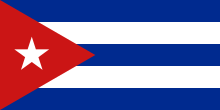 04-22-2024 ~ Cuba is going hungry. The costs of food and other basic necessities are skyrocketing. Rolling blackouts periodically plunge the island into darkness. Parents struggle to find milk for their children.
04-22-2024 ~ Cuba is going hungry. The costs of food and other basic necessities are skyrocketing. Rolling blackouts periodically plunge the island into darkness. Parents struggle to find milk for their children.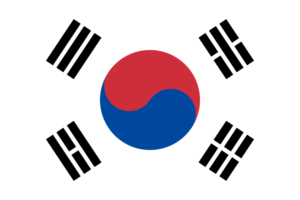 04-20-2024 ~ Opposition party wins in South Korea’s election, posing challenges for President Yoon’s governance and foreign relations, notably with China. Despite this, Yoon’s alignment with the U.S. and Japan is likely to continue, amid domestic concerns like inflation and medical strikes.
04-20-2024 ~ Opposition party wins in South Korea’s election, posing challenges for President Yoon’s governance and foreign relations, notably with China. Despite this, Yoon’s alignment with the U.S. and Japan is likely to continue, amid domestic concerns like inflation and medical strikes.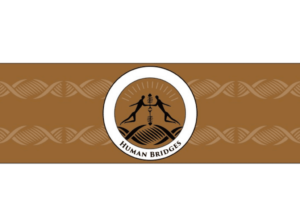 04-19-2024 – It’s surprising that human infants
04-19-2024 – It’s surprising that human infants 
